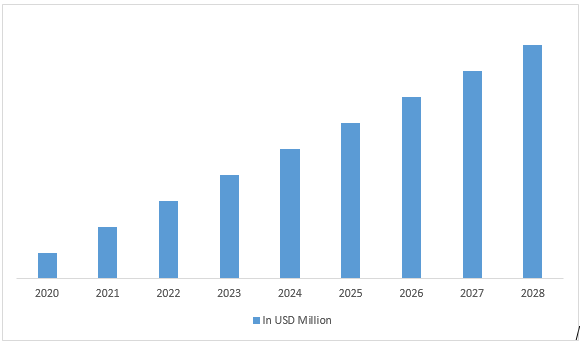Increasing demand for hydrogen fuel cells along with the adoption of renewable energy is expected to propel the growth! APAC is expected to lead the growth!
- Vikas Kumar
- May 15, 2023
- ENERGY & POWER, NEWS
- Photocatalytic Water Splitting Device Market, Photocatalytic Water Splitting Device Market Analysis, Photocatalytic Water Splitting Device Market Share, Photocatalytic Water Splitting Device Market Size, Photocatalytic Water Splitting Device Market Trends
- 0 Comments
The Asia Pacific region has been witnessing a surge in the demand for renewable energy sources in recent years along with the significant attention is the photocatalytic water-splitting device. This device splits water molecules into hydrogen and oxygen using sunlight as the energy source, providing a clean and sustainable source of energy. The Asia Pacific Photocatalytic Water-Splitting Device Market has been growing steadily over the years and is expected to continue to do so in the future. The increasing need for clean energy and the growing environmental concerns have been the major driving factors behind the growth of the Asia Pacific photocatalytic water-splitting device market. The region has a significant population, and the demand for energy is high. The increasing levels of pollution and the adverse effects of climate change have made it imperative for the countries in the region to adopt sustainable and clean energy sources. The photocatalytic water-splitting device is seen as a promising technology that can help in meeting energy demands while also reducing the carbon footprint.
Get the inside scoop with Sample report:- https://univdatos.com/report/photocatalytic-water-splitting-device-market/get-a-free-sample-form.php?product_id=38302
Japan, China, and South Korea are the major players in the Asia Pacific photocatalytic water-splitting device market. Japan has been at the forefront of developing this technology and has made significant progress in commercializing it. The country has been investing heavily in research and development, and the government has been offering subsidies to encourage the adoption of this technology. China has also been investing in this technology and has been ramping up its efforts to reduce its carbon footprint. The country has been actively promoting the use of renewable energy sources and has set ambitious targets for reducing carbon emissions. South Korea, on the other hand, has been focusing on the commercialization of this technology. The country has been investing in the development of low-cost and efficient photocatalytic water-splitting devices that can be used in various applications, such as hydrogen fuel cells and energy storage systems. The country has also been partnering with other countries in the region to develop this technology and has been actively promoting its use. The increasing investments in research and development, the government initiatives to promote the adoption of clean energy sources, and the growing environmental concerns are expected to drive the demand for this technology.
Further, the APAC Photocatalytic Water-Splitting Device Market is expected to grow at a strong CAGR of 5.0% during the forecast period (2022-2028). The Asia Pacific photocatalytic water-splitting device market is a promising market that is expected to witness significant growth in the coming years. The increasing demand for clean and sustainable energy sources, the government initiatives to promote the adoption of this technology, and the growing environmental concerns are expected to drive the demand for this technology. The market is expected to witness a significant increase in the number of players, and the competition is expected to intensify. The focus on developing low-cost and efficient devices is also expected to increase, as the demand for this technology grows.
APAC Photocatalytic Water-Splitting Device Market Revenue (2020-2028)- USD Mn

For a detailed analysis of the Global Photocatalytic Water-Splitting Device Market browse through:- https://univdatos.com/report/photocatalytic-water-splitting-device-market/
Based on product, the market is segmented into Metal Oxide Photocatalysts, Carbon-Based Photocatalysts, and others. The carbon-based photocatalysts segment is expected to witness a significant CAGR during the forecast period. Carbon-based photocatalysts are materials that are composed mainly of carbon and are capable of absorbing light and initiating chemical reactions. They have gained significant interest in recent years due to their unique properties, such as their high stability, low toxicity, and ability to absorb light in the visible range. Carbon-based photocatalysts have applications in fields such as energy production, environmental remediation, and biomedical engineering. For example, they can be used to generate hydrogen or other fuels from water or to break down pollutants in water or air.
By application, the market is segmented into hydrogen production, water treatment, air purification, and others. The hydrogen production segment is expected to register significant market growth during the projected year. Hydrogen production by photocatalytic water-splitting is a promising method for renewable energy production. It involves using a photocatalyst to convert solar energy into chemical energy, which can then be used to split water into hydrogen and oxygen. There are several types of photocatalysts that can be used for water-splitting, including metal oxides like titanium dioxide (TiO2), as well as carbon-based materials like graphene and carbon nanotubes.
Global Photocatalytic Water-Splitting Device Market Segmentation
Market Insight, by Product
- Metal Oxide Photocatalysts
- Carbon-Based Photocatalysts
- Others
Market Insights, by Application
- Hydrogen Production
- Water Treatment
- Air Purification
- Others
Market Insight, by Region
- North America
- U.S.
- Canada
- Rest of North America
- Europe
- Germany
- UK
- France
- Italy
- Rest of Europe
- APAC
- China
- Japan
- India
- Rest of APAC
- Rest of the World
Top Company Profiles
- Toyota Motor Corporation
- Honda Motor Co., Ltd.
- Toshiba Corporation
- Mitsubishi Electric Corporation
- Panasonic Corporation
- LARSEN & TOUBRO LTD
- CASE GROUP
- Linde plc
- Fortescue Future Industries
- Air Products
